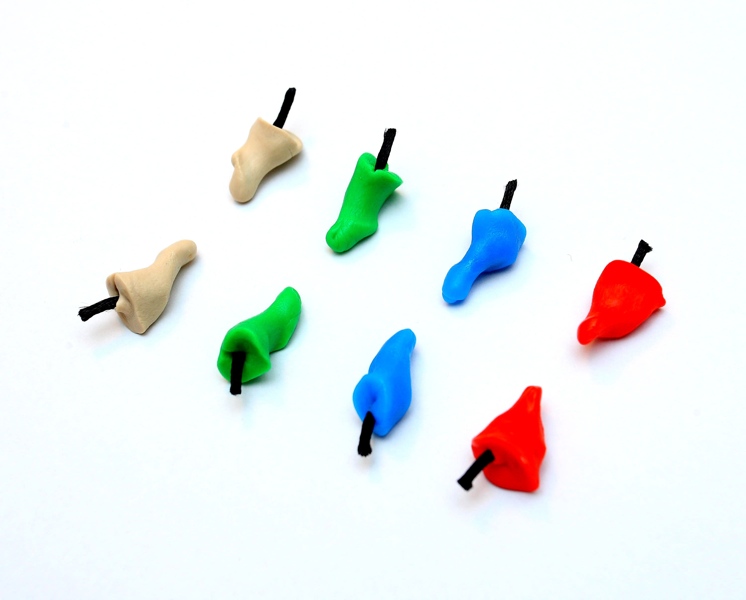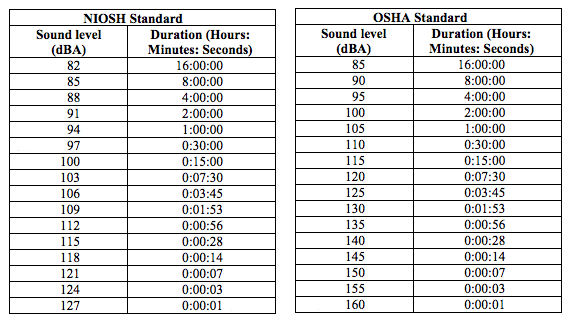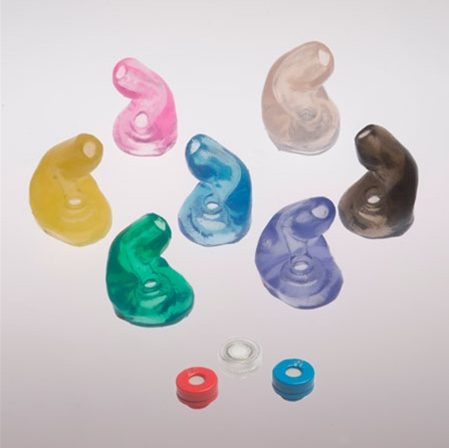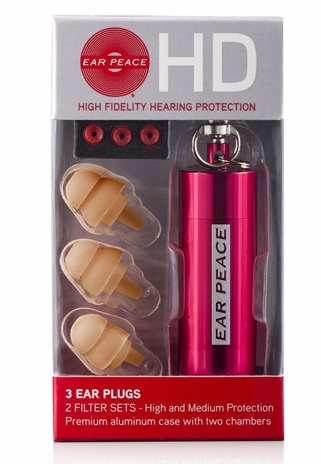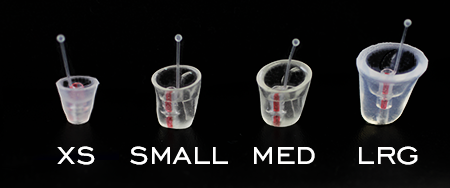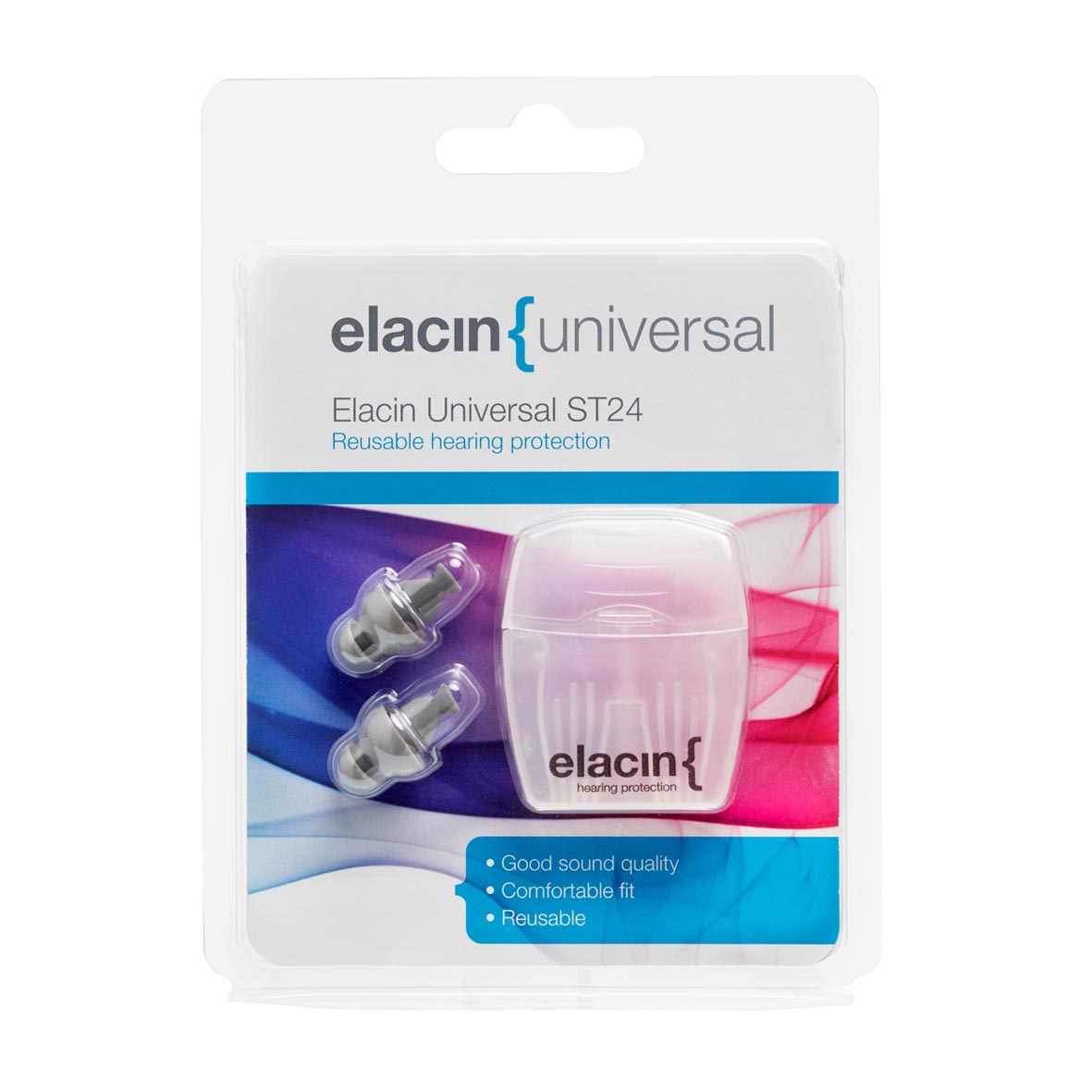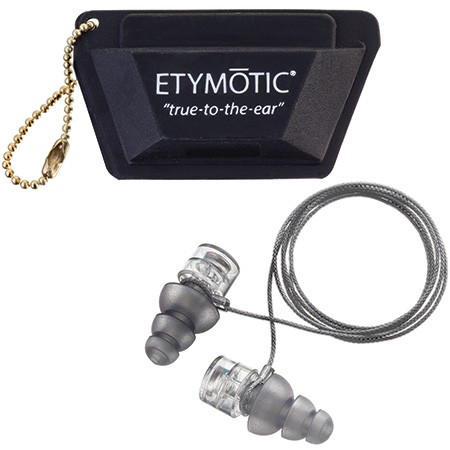Hearing Protection Roundup: The Best Earplugs for Musicians and Audio Engineers
Whether you’re shopping for hearing protection as a musician, engineer, DJ, or concert-goer, it’s not always easy to figure out what kind of earplugs are right for your needs and budget.
There is no shortage of options on the market, with models of earplugs ranging from tens of dollars to several hundred or more, making this seem like an overwhelming decision to many first-time buyers. Once you understand the major differences between models however, your job becomes a whole lot easier.
To help narrow down your choices, we’ve categorized each of the main types of earplugs, and I’ve personally tested some of the most popular models from across the spectrum to put together this comprehensive roundup and buyer’s guide for you.
Whether you’re buying your first set of inexpensive earplugs for rehearsals or concert-going, or making a long term investment in your most precious professional asset, there is no question that a good set of earplugs is a must-have. Now read on to discover which ones may be the best fit for you.
How Much Hearing Protection Do You Need?
As discussed in our interview with audiologist Dr. Julie Glick for part one of this series, noise-induced hearing loss is a major and insidious threat to the hearing (and livelihoods) of musicians and audio professionals.
How do you know when you’re at risk? In short, it all boils down to decibel levels over time: The louder the level, the less time you can safely be exposed to it. There are two scales that are often used to calculate these safety levels—the OSHA and NIOSH scales. These two rating systems differ, and audiologists tend to prefer the conservative NIOSH guidelines. When you make your living with your ears, it’s a good idea to do the same.
Looking at these graphs, you can start to test what a safe exposure time would be for each of the decibel ranges. The tricky part is knowing what decibel level you are being exposed to, and then calculating how long the exposure time is (or is going to be).
This is easier now than ever before, so we really don’t have an excuse for not knowing what kind of levels we’re exposed to in our work (and play). With a smartphone, you can download an SPL meter like logSPL or Decibel Ultra, both of which I used to test my own sonic environments for this roundup.
I came to find that if you take these kinds of measurements often, you will soon start to become more aware of how loud certain environments are, and gradually develop a gut instinct for the general level of loudness you are being exposed to. In turn, you’ll develop a pretty good idea of just how much hearing protection you might need to bring in a given situation.
For instance, if I know I am attending a rock concert with 4 acts, and the show is going to be about 5 hours long, I need to calculate a safe decibel level for the 5-hour exposure time. (Although the acts may not be playing the full 5 hours, it’s also important to consider if there will be music playing loudly through the PA between sets.)
In general, a rock concert might reach 100-115dB, with the loudest concerts sustaining those kinds of punishing levels for much of their duration.
If I bring earplugs with a 15dB reduction rating into an environment where I know I am likely to be exposed to 105dB levels for a prolonged period, I am only safe to do so for around 2.5 hours, give or take, without putting myself at risk for some degree of permanent hearing loss.
The rule to remember is that for every 3dB over 85dB, your safe exposure time is reduced by half!
At 85dB—the traditional target level for average loudness in a movie theater—you should be safe for up to 8 hours. Increase that to 88dB and your safe exposure time is cut down to just 4 hours, and at 91dB, the safe exposure time drops to just 2 hours, and so on.
Remember, just because you have no immediate symptoms (such as ringing in your ears) doesn’t mean that you aren’t causing permanent damage to your hearing!
So What Are Your Options?
I spoke with Jack Kontey at Sensaphonics to learn a bit more about the different kinds of hearing protection on the market.
As he explained, there are several distinctions to make. The broadest of these distinctions is between “Custom Fit” plugs, which are any earplugs that require you to have impressions of your ear canal taken, and “Generic Fit”, which are any earplugs that are ready for anyone to wear right off the shelf.
In the Generic Fit category, there are two main varieties: “Solid” and “Filtered”. An example of the Solid variety would be the simple foam earplugs you might find at a drugstore. The lowest-cost Hearos would be one such example.
A Filtered earplug, as the name suggests, is any earplug with a filter in it, which includes most of the options in the “Custom Fit” category.
Filtered earplugs help to recreate your ear’s natural response to bass frequencies and work with the ears’ natural frequency response curve. This makes for a listening experience that is as close to natural as possible.
In general, hearing protection without a filter is not going to be what anyone in music—either working or as a fan—will want for maximum enjoyment and accuracy. It is likely that if you are using solid earplugs, you may have to take them out to hear others speak clearly, or to better hear the nuances and details of the music.
While this is a step up from going to concerts without any protection, regularly removing your earplugs throughout a performance somewhat defeats the point of having them in the first place, potentially leading to noise-induced hearing loss.
Rating Your Protectors: How Earplugs Stack Up
There are a variety of different ratings and classifications given to hearing protection products. Many varieties feature an “NRR” number on the package, which stands for “Noise Reduction Rating”.
These ratings are determined by the American National Standards in compliance with OSHA in the U.S. These ratings are meant to show the potential decibel reduction a pair of earplugs offer, if worn and fitted correctly.
(In the EU, these ratings are instead regulated by the International Organization for Standardization, which uses a simple “Single Number Rating” or “High/Middle/Low” scale.)
This is not to be confused with the amount of attenuation when using filtered earplugs, which come in varieties of filtered attenuation ranging, in general, from 9, 15, 20, and 25. These attenuations are meant to give the best possible flat frequency response across a range of frequencies while creating the best possible seal in the ear canal.
Some “Solid” earplugs may sport even higher ratings, but their frequency response will be significantly more skewed, decreasing intelligibility as they reduce loudness. Therefore, when listening is meant to be critical or analytical, it is best to opt for filtered plugs.
Testing: Hear We Go!
The tests I conducted are in no way perfect. What we did know before I started administering my tests is that my hearing is (thankfully) “perfect” according to my audiologist. With the ability to hear the full range of frequencies in both ears, these tests were simpler for me to conduct than for someone who may already have some noise-induced hearing loss, in different ears, respectively.
Over the course of several weeks, I took more than a half dozen models of earplugs out for a test drive. I conducted these tests in various listening environments with many different genres of music.
I tested each set of earplugs side-by-side at the same events to try to be as fair as possible. During this time, I made notes with regard to seal, fit and comfort (much of which comes down to personal taste and ear shape). I also factored in each model’s apparent durability, ease of use, and overall sound quality.
Below, you will also find comparisons of price, features, benefits, and level of hearing protection for each model to help inform your choice based on your own budget and needs.
Custom Fit Molded Earplugs
Not everyone can afford to immediately make the jump to custom molds, but it is a good goal to have, even if you content yourself with generic fits for the near-term.
I was fortunate to be able to test two pairs of custom-molded earplugs: one by Sensaphonics and the other by Westone. Both were tested in the same environments at the same time, with as close to the same filter attenuation as possible for each.
Sensaphonics ER Series Musician Earplugs Custom Molds with Etymotic Filters
One of the benefits of many custom molded earplugs—including these Sensaphonics—is that you can swap out the filters for different applications.
The filters themselves (made by Etymotic Research, Inc.) come in a few colors, and offer a variety of attenuation options: 9, 15 and 25 decibels. For my review, I tested both the 15dB and 25dB filters.
The material of the molded earpiece itself is very nice, soft, and pliable—yet durable—and also comes in a variety of colors. They have an extremely comfortable fit and a very good seal. To my ear, they felt so natural in fit that you could forget that you even have them in.
The attenuation in the 15dB filters was very smooth and accurate across all frequency ranges. With levels around 90dB, this made for a very comfortable and precise listening experience.
I also tested the 25dB filters several times at events with decibel levels metering from 98-108dB. Even with 25dB of attenuation, I observed that cymbals sounded natural and that the lows were still rich and expressive—not at all muffled like a solid earplug might make them sound.
Overall, the Sensaphonics ERs were incredibly easy to use and comfortable to wear for long periods, with a good seal that made listening both accurate and natural. Priced around $150.00, the Sensaphonics plugs come with a carrying case and one set of filters. Additional pairs of filters are $70.00 each.
Westone Tru-Fit Custom Hearing Protection with Westone Filters
Westone’s filters have the unique benefit of being compatible with some of their generic fit earplugs in the “WM Professional” series, allowing you to upgrade your hearing protection over time. This unique benefit is worth considering for those who aren’t ready to make the jump to a custom mold just yet, but plan to in the future.
For those who want some of the benefits of custom-molded earplugs, these WM Professional Plugs are definitely worth considering.
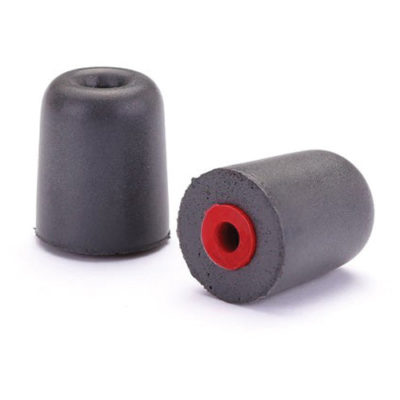
Westone’s foam eartips come in a variety of shapes and sizes, making your custom hearing protection even more customizable still.
The earplugs I tried came in a range of colors, and the filters were color coded by attenuation: 10, 16, 20, and 25dB filters.
(Their website also conveniently includes the NRR next to the filters’ attenuation for reference. For example, the 16dB filters have an NRR of 10. It is crucial to remember that attenuation and NRR are not the same thing!)
The earplugs themselves are made out of a harder material, and while seemingly more durable than the Sensaphonics, I didn’t find them as comfortable to insert into my ears.
The Westone filters and earplugs offer a somewhat smaller profile, making them slightly less noticeable when worn, should that be a concern. The seal is good, but with the smaller profile, I felt that if I yawned or smiled while wearing them, I could notice a difference in what I was hearing.
I tested the 16dB and 25dB filters, finding both to be very transparent-sounding with no noticeable differences in my listening experience.
Initially, I felt that the left earplug wasn’t quite fitting comfortably, but Westone were easily able to change this for me, and quickly mail out a new left side earplug. It’s good to know that if you need an adjustment in your fit, they are able to do so quickly, and easily.
Overall, these earplugs offer great separation and clarity, a low visual profile, and the added benefit of being an earplug you can work towards owning through their built-in cross-compatibility with their generic line.
Westone’s Tru Customs start at $199.99, and come with a filter of your choice. Additional pairs of filters are $79.00. These earplugs also come with a carrying case.
Generic Fit Filtered Earplugs
EarPeace have thought out a great set of features for their HD generic fit earplugs:
They come in 3 different skin tones, and offer you the option to choose the color for the nice aluminum keychain case they ship with. They also provide 3 earplugs in each “pair” (in case you lose one!) as well as 5 filters—that’s one spare filter in the higher attenuated filter set!
These great features are a lot to offer at just $20 per pair. Their website also gives you the option of ordering several pairs at once for further discounts, as well as offering free shipping within the U.S.
The colors of the two filter sets that come with the HD plugs are skin tone and red, providing 11dB and 14dB respectively.
In listening environments that clocked in at 97dB and 100dB, I used the red filters (14dB). Overall the sound was dampened, with a clearly audible reduction in decibels.
These struck me as a less detailed-sounding set of earplugs, although the high and mid registers still came through clearly, and the lower registers didn’t seem to be impaired. These are not earplugs that you can hear conversations through easily, however.
The EarPeace HD’s have a comfortable fit and are made of a soft silicon that stay securely in the ears—something that is tough to find in a generic fit. Inserting them properly can take a minute or two because they are so soft, but once you have them in, they have a good seal. They are also easy to remove, thanks to a little pull tab on the last flange of the earplug.
I would say that these earplugs are best used for short-duration concert attendance, clubs, and loud bars. I wouldn’t recommend them for use with FOH engineers, or anyone needing to engage in more critical listening. They are, however, the perfect keychain companion for those who often find themselves at gigs, pubs, and clubs without warning and want to make sure they have versatile and effective hearing protection on-hand.
Earasers Musician’s HiFi Earplugs
Earasers have created a comfortable and innovative solution for musicians who are looking for comfortable fitting plugs for practice, gigging, and recording. (Hi drummers!)
One of the more comfortable sets of earplugs I have worn, these hardly felt like I was wearing earplugs at all, owing largely in part to their novel shape and design.
I tested the Earasers Musicians HiFi Plugs in environments of 103dB and 98dB and found them to be very transparent, clear, and balanced overall. The fit has a good seal and in a unique and welcome turn, their starter kit (which comes with a pair of plugs) gives you the option of custom-sizing your plugs yourself!
This is really a clever design feature, and helps make sure that you can get the best fit possible from a pair of “generic” earplugs.
One of the things I really found valuable about the Earasers was the variety of kits and options that allow for user optimization. If you already know which of their four sizes is best for you and are just looking to purchase a pair on their own, they retail for $49.99, and come with a plastic carrying case.
For those who are new to the brand, the Starter Kit comes with two of the four size options and gives you sizing tools in case you don’t quite know what size you will need yet, have one ear that is a different size than the other, or are giving them as a gift.
The Pro-Kit offers an upgraded aluminum carrying case (which can be engraved upon request) an extra pair of earplugs, two different filter sets (offering 19dB and 23dB reduction) as well as a filter changing tool, cleaning wipes and brush, for $79.95. A flashlight-equipped version of the aluminum keychain carry case is also available.
Earaser have really thought ahead about features you might need from filtered generic-fit hearing protection. I would recommend these in most instances for musicians or audio engineers who are going to be working for long periods of time, who really need more nuanced filters and a lot of transparency. These would be an excellent choice for musicians to practice and gig with in most instances.
Elacin Universal ST24 Earplugs
Elacin offers an especially affordable take on filtered hearing protection. These earplugs provide a 24dB reduction. I tested them in environments that were 103.5dB and 98dB, and found them to have a comfortable fit with a decent seal.
What was nice, was that for a flanged-style earplug, the “plugged up” sensation was minimal. All frequencies seemed to be well-represented and nothing sounded too muddy in the environments under test. The filters in this particular earplug are Elacin’s own Core Helix Technology™.
Priced at 14.95 Euros (which includes a small plastic carrying case), these are an affordable solution for any music lover looking for hearing protection during a loud night out, when exposure times to elevated noise levels will be periodic and shorter in duration. These would also be great for those who work in bartending or hospitality that need to be able to hear conversation properly over loud music.
Generic Fit Non-Filtered Earplugs
Leave it to Etymotic, one of the earliest brands in the professional hearing protection space, to be in the lead when it comes to auditory innovation and research. Chances are that if you are using a generic-fit hearing protection solution with an interchangeable ear tip, it is likely one of their designs.
The ER20XS earplugs are Etymotic’s newest iteration of their classic Ety-Plug line. In addition to the good fidelity these offer, you can use the foam tip version if the more traditional flange option isn’t the fit you desire.
These earplugs come with two different flange tips, providing up to three different sizing options. A case and neck cord are also included.
These earplugs offer 13dB in reduction, and when I tested them in environments of 100dB and 98dB, I found that they have a decent seal and accurately replicate most of the frequency spectrum.
Listening through the ER20XS, audio and music had a natural and rich quality, with speech intelligibility maintained. The sound never seemed dull, although my ears did have the sensation of “being plugged”. I did feel that the protection was of a good degree, so long as I wasn’t going to be wearing them for an extended duration of time while listening to music at loud decibel levels.
Retailing for $19.95, the ER20XS earplugs are a good value for anyone who attends gigs regularly and wants to protect their ears. They’re also a great match for someone who works in a loud environment and still needs to maintain speech intelligibility.
Their design is so effective that you even find other companies stocking this product with added nuances in packaging and accessories.
For example, the company Earlove also sells this model of earplug with an upgraded aluminum carrying case that is great for the outdoor concert goer, or those who simply want to have all bases covered by keeping these on their keychain. If you are a reader in the EU, you can also obtain this model of earplugs from Elacin, who stocks these in their own unique fold-out packaging.
Wrapping Up the Round Up
If you’re serious about music and audio, you absolutely must invest in the appropriate hearing protection. It is as important as any other piece of gear you might buy.
Anyone in music as a career—or even those attending music events regularly—should consider investing in custom-molded hearing protection to help retain their critical listening abilities for the long haul, even in high-volume situations.
For those who are serious about music but are just beginning to consider solutions for hearing protection, there are plenty of options that can help bridge the gap to eventual custom molds.
When extended duration and accurate critical listening is a must, my personal preference for a custom mold fit would be the Sensaphonics. For shorter duration, casual listening, whether at a rehearsal or a concert, I prefer the convenience of carrying around the less expensive Earasers. Even as a generic fit, these earplugs performed well and were packed with features.
For everything in between—and any of the myriad of scenarios and uses—there are many great options listed above. No matter which ones you choose, the most important thing is that you simply choose to protect your hearing.
Kallie Marie is a producer, composer and educator who lives in New York.
Please note: When you buy products through links on this page, we may earn an affiliate commission.







